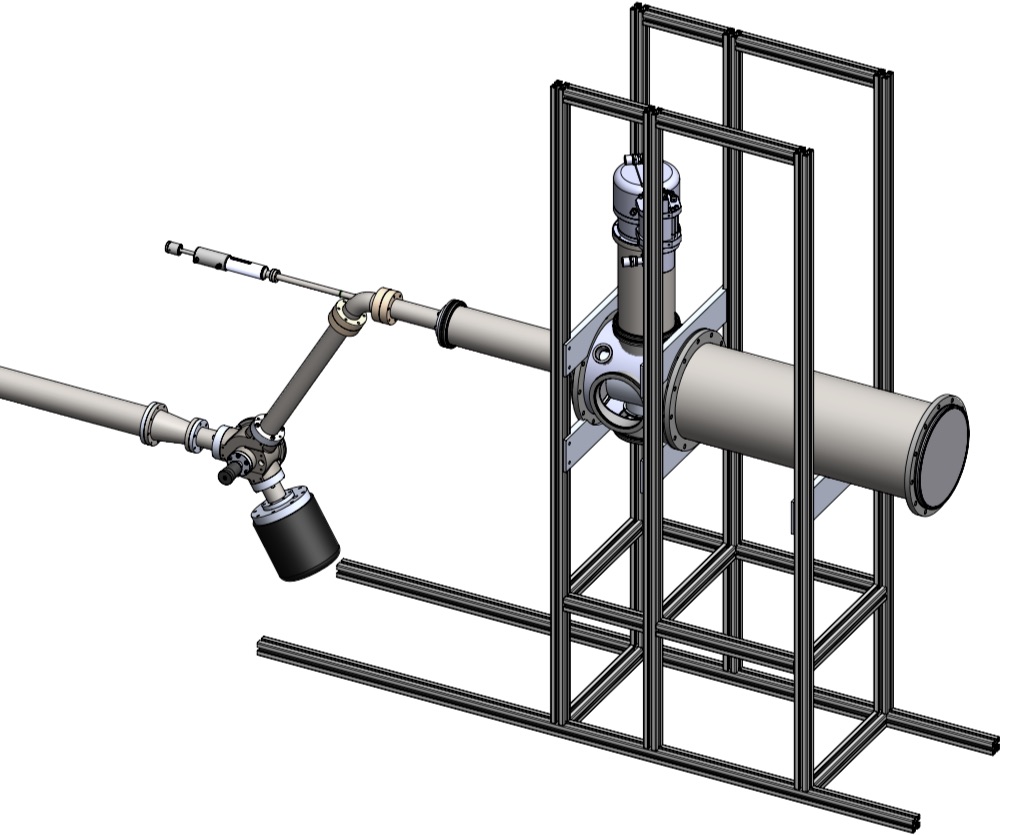With ultracold neutrons (UCN) many questions in fundamental physics are investigated. To obtain precise answers at high confidence level within realistic measurement times, high UCN densities are needed. Highest UCN densities are achieved using thermal sources, whereas highest UCN densities are nowadays achieved in superthermal sources. While thermal sources are already almost at their limit, the density delivered by superthermal sources could be greatly increased by optimization of the wall material of the production volume. However, for both sources the efficiency of the neutron handling elements between the sources and the experiments also are a significant factor to achieve high densities.
To optimize the delivered neutron density at the experiment, in this thesis the efficiency and optimization of a new ∅50 mm neutron handling system are investigated. The velocity dependent neutron transmission was measured from zero to 20 ms using a time of flight set-up in horizontal and vertical alignment.
Characterization of the handling system includes transmission of various highly polished stainless steel guide elements and bends. In addition the transmission of glass guides coated with NiMo and non depolarizing Cu was measured. Within this work, a three way neutron switch has been designed, commissioned and characterized with neutrons.
In addition the by theory imposed 1/v2 transmission dependence on surface roughness and to improve the delivered UCN beam and to increase its the detection efficiency towards slower neutrons, the transmission of a thin aluminum foil before and after polishing was measured.
Increasing the density in the production volume of superthermal sources, a set-up for storage lifetime measurement consisting of the characterized components has been developed as a test facility. The mechanical design accommodates any shape of storage bottles at ambient and cryogenic temperatures.

For initial testing, a storage bottle with the same dimensions as the UCN source prototype SUN II is coated with a fluoropolymer called CYTOP, whose UCN properties were so far unknown. Its neutron optical potential characteristics is similar to Fomblin grease/liquid. This material is expected to resolve the problems of surface thickness uniformity and defects while remaining compatible with operation at cryogenic temperatures.
The measurements presented in this work reveal a promising effective lifetime of τeff = (200 ± 98) s at room temperature. Also, an additional cooling test of the bottle mounted in the test set-up has been successfully conducted. This strengthens the case for CYTOP as coating material for superthermal sources at cryogenic temperatures.



Ein Gedanke zu „Master Thesis Jürgen Hingerl: A Versatile Device for Studying Ultracold Neutrons and Testing Cryogenic Storage Volumes“
Hi, this is a comment.
To get started with moderating, editing, and deleting comments, please visit the Comments screen in the dashboard.
Commenter avatars come from Gravatar.
Kommentare sind geschlossen.